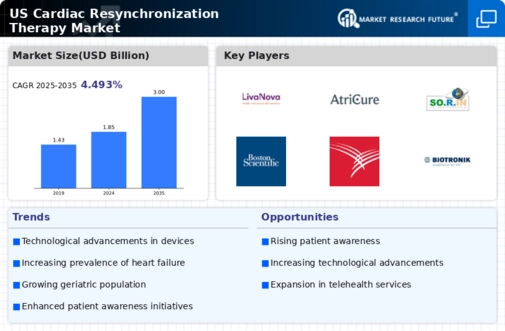The US Cardiac Resynchronization Therapy Market is characterized by significant competition, driven by advancements in technology and increasing prevalence of heart failure conditions. This market comprises a diverse array of companies that are engaged in the development, manufacturing, and marketing of devices aimed at improving cardiac function in patients with rhythm disorders.
The competitive landscape is shaped by the need for effective therapies, changing regulatory environments, and a growing demand for minimally invasive procedures. Companies are focusing on innovation to enhance their product offerings and provide better patient outcomes, thereby fostering an environment of continuous improvement and differentiation.
LivaNova holds a prominent position in the US Cardiac Resynchronization Therapy Market with its portfolio of products designed to address heart failures and arrhythmias. The company is known for its robust research and development capabilities, which enable it to introduce advanced therapies that cater to the specific needs of patients.
LivaNova’s strengths include a well-established brand reputation, extensive distribution networks, and strategic collaborations with healthcare professionals and institutions, which enhance its market presence. By investing in innovative technologies and maintaining high standards of clinical evidence, LivaNova continues to solidify its role as a key player in the cardiac therapy space within the US.
AtriCure also plays a significant role in the US Cardiac Resynchronization Therapy Market, known for its focus on surgical and non-surgical treatments for atrial fibrillation and other cardiac-related conditions. The company offers a range of products, including energy sources for surgical ablation, that are designed to improve cardiac rhythm management.
AtriCure's strengths lie in its innovative product line, which is backed by substantial clinical data demonstrating effectiveness and safety. The company continues to forge partnerships and acquire complementary technologies, enhancing its capabilities in the cardiac therapy market.
These strategic mergers and acquisitions further bolster AtriCure’s presence in the US, allowing it to address a wider array of patient needs and expand its reach within this specialized therapeutic area.



















